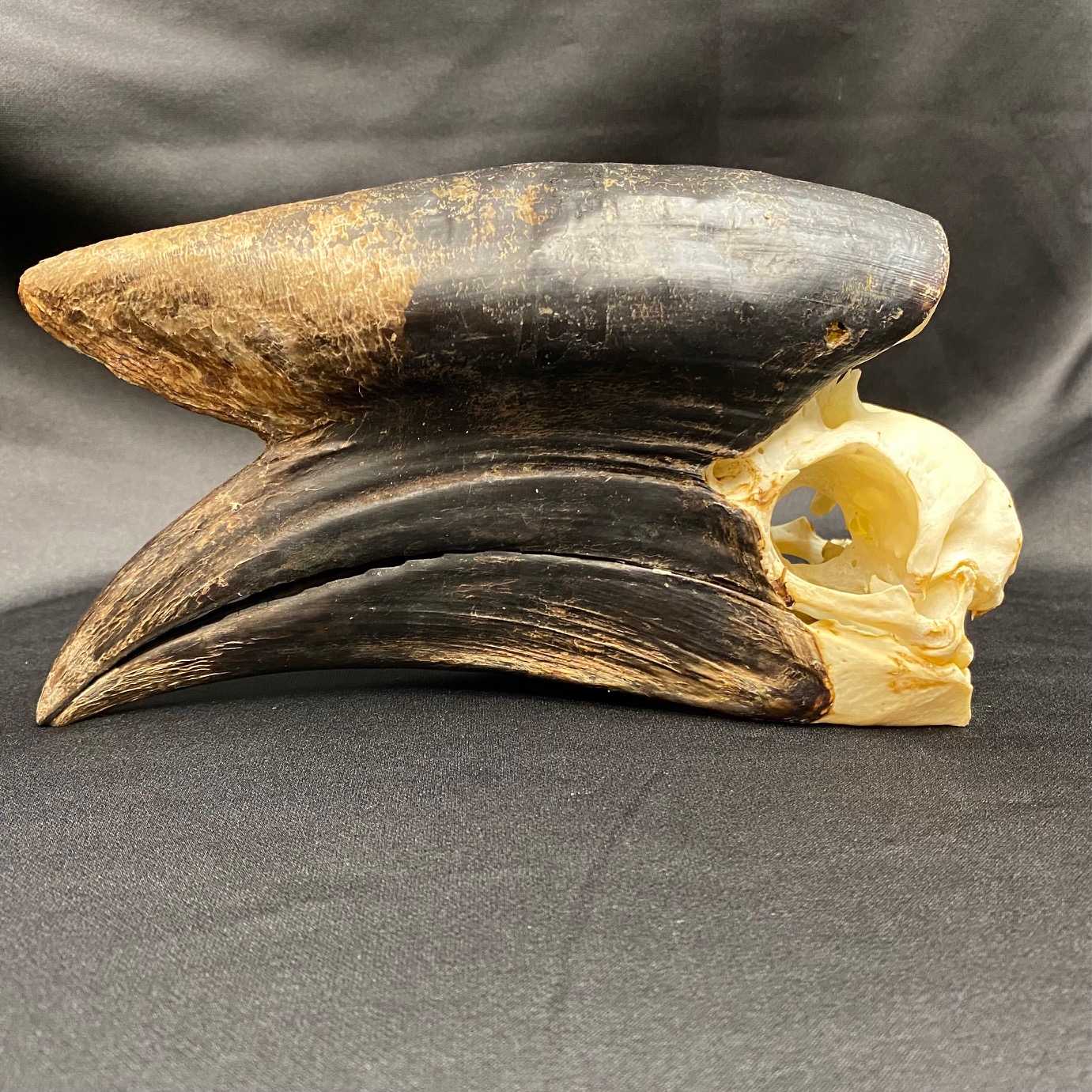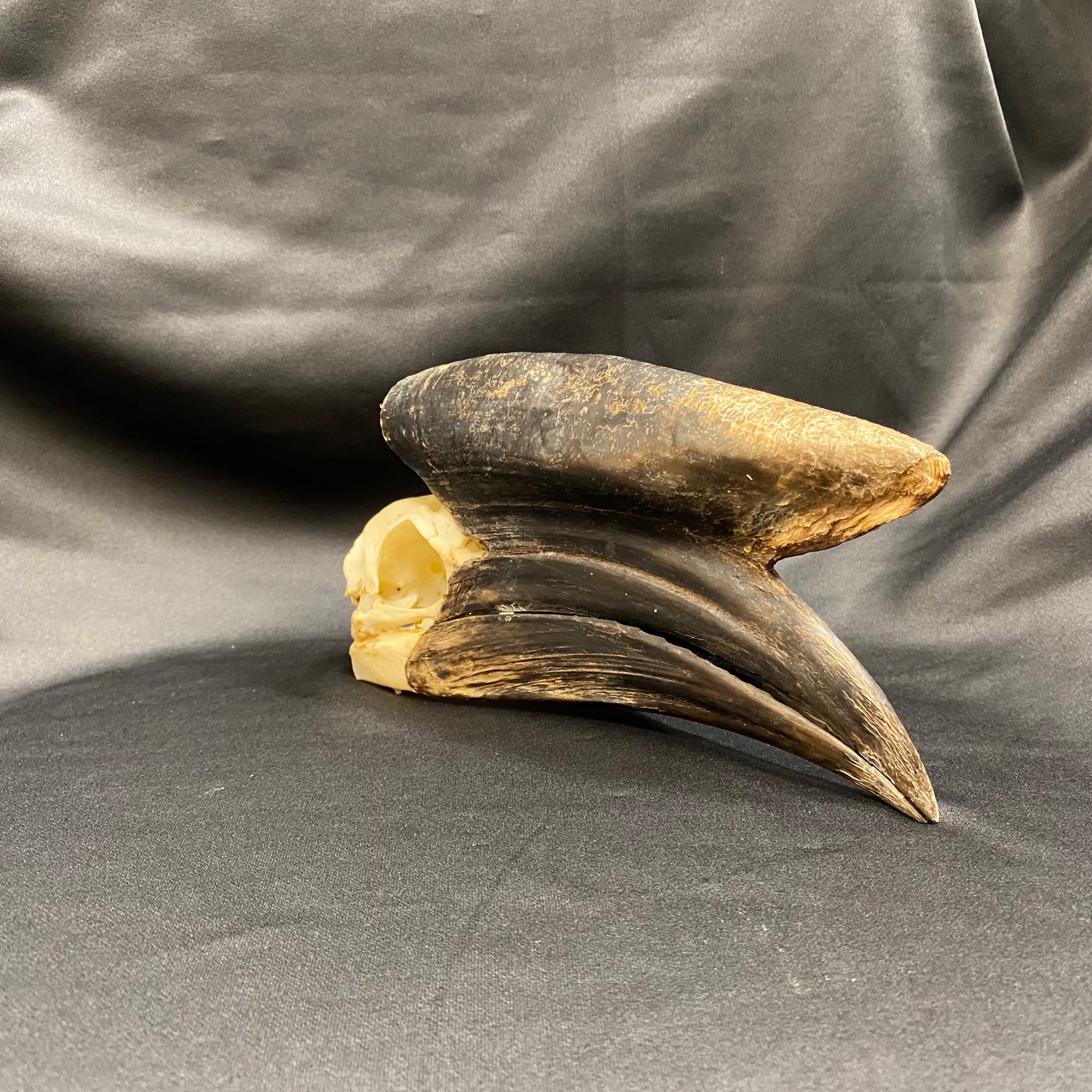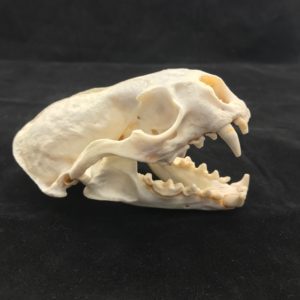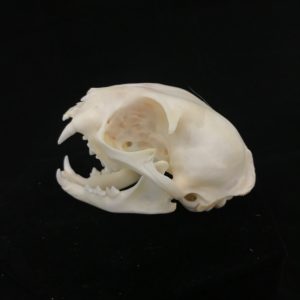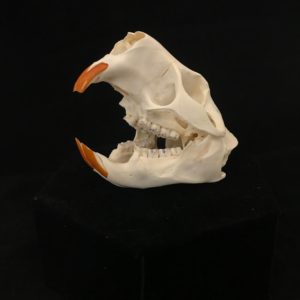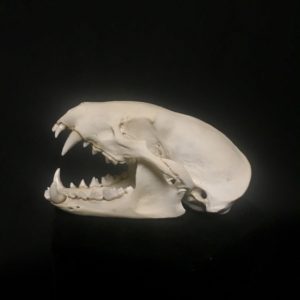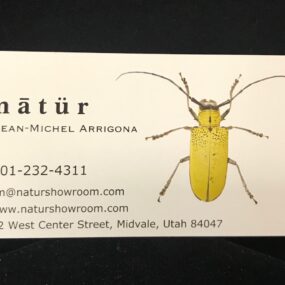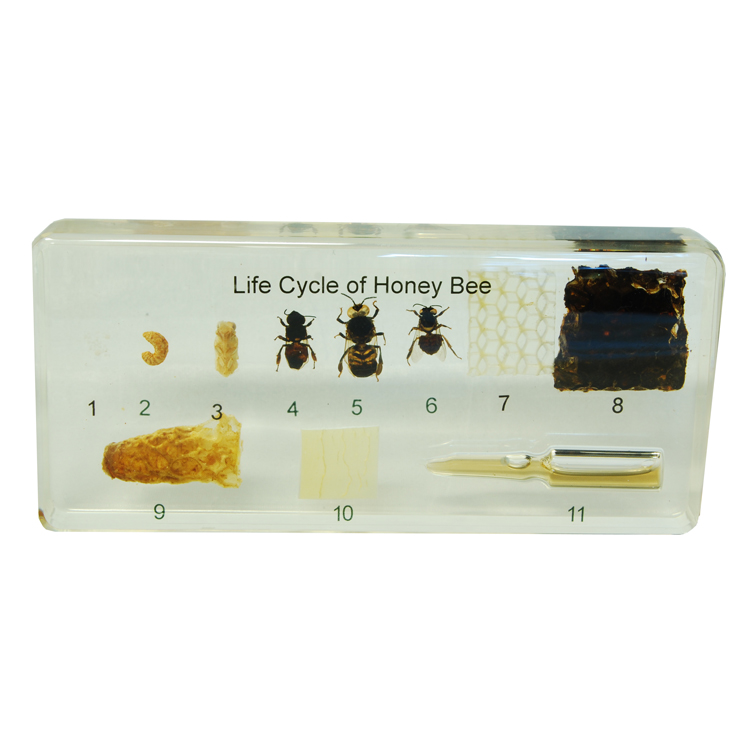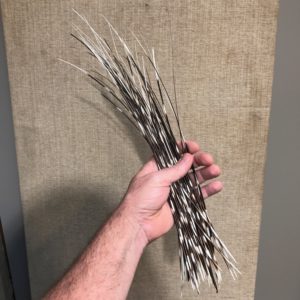Description
Beautiful, black casqued hornbill skull. This particular specimen is approximately 7 5/8 inches long, 2 1/4 inches at its widest point, and 4 1/4 inches tall.
A black casqued male horn bill is a very large bird that can be found in African rain forests. It is often found in the canopy feeding on the fruits found in the trees. The male is larger than the female, with black feathers and a large black bill. Females have much smaller, paler bills with a brownish hood over their head and neck. The tail is long and black with a white tip, which is a feature that separates this species from other large horn bills. These birds make a loud braying sound that can be heard from several miles away.
You will receive this specimen or one similar to it. We are happy to send you photos of the exact specimen you will receive.
The Ceratogymna atrata, also known as the Black-casqued Hornbill, is a remarkable and visually striking bird native to the lush tropical rainforests of Central and West Africa. Renowned for its imposing black plumage, massive beak, and dramatic casque, this hornbill species is an awe-inspiring sight. Its glossy black feathers contrast beautifully with the vibrant yellow and orange hues of its casque, creating a visually captivating appearance that sets it apart from other hornbill species.
Measuring up to 90 cm in length, the Black-casqued Hornbill is one of the larger hornbills in Africa. Its unique, helmet-like casque—made of dense keratin—sits atop a long, powerful beak, a characteristic feature that aids in cracking hard fruit and nuts, its primary food source. This distinctive beak structure also plays an important role in communication, with males often having larger casques than females, signaling their fitness during mating displays.
Ceratogymna atrata is a frugivore, with its diet consisting primarily of fruit, seeds, and occasional insects. These hornbills are instrumental in their ecosystem, acting as seed dispersers that contribute to the regeneration of forests. Their impressive flight and large size make them an unforgettable sight as they soar through the canopy.
One of the most intriguing aspects of the Black-casqued Hornbill’s behavior is its nesting strategy. Like many hornbills, females seal themselves inside tree cavities during the breeding season, leaving only a small opening through which the male feeds her and the young. This fascinating protective behavior ensures the safety of the nestlings from predators.
Ceratogymna atrata faces threats from habitat loss due to logging and deforestation. Protecting their habitats is essential to preserving this species and maintaining the ecological balance in African rainforests.
For wildlife enthusiasts and conservationists, the Black-casqued Hornbill is a bird that embodies both the beauty and fragility of the natural world.


